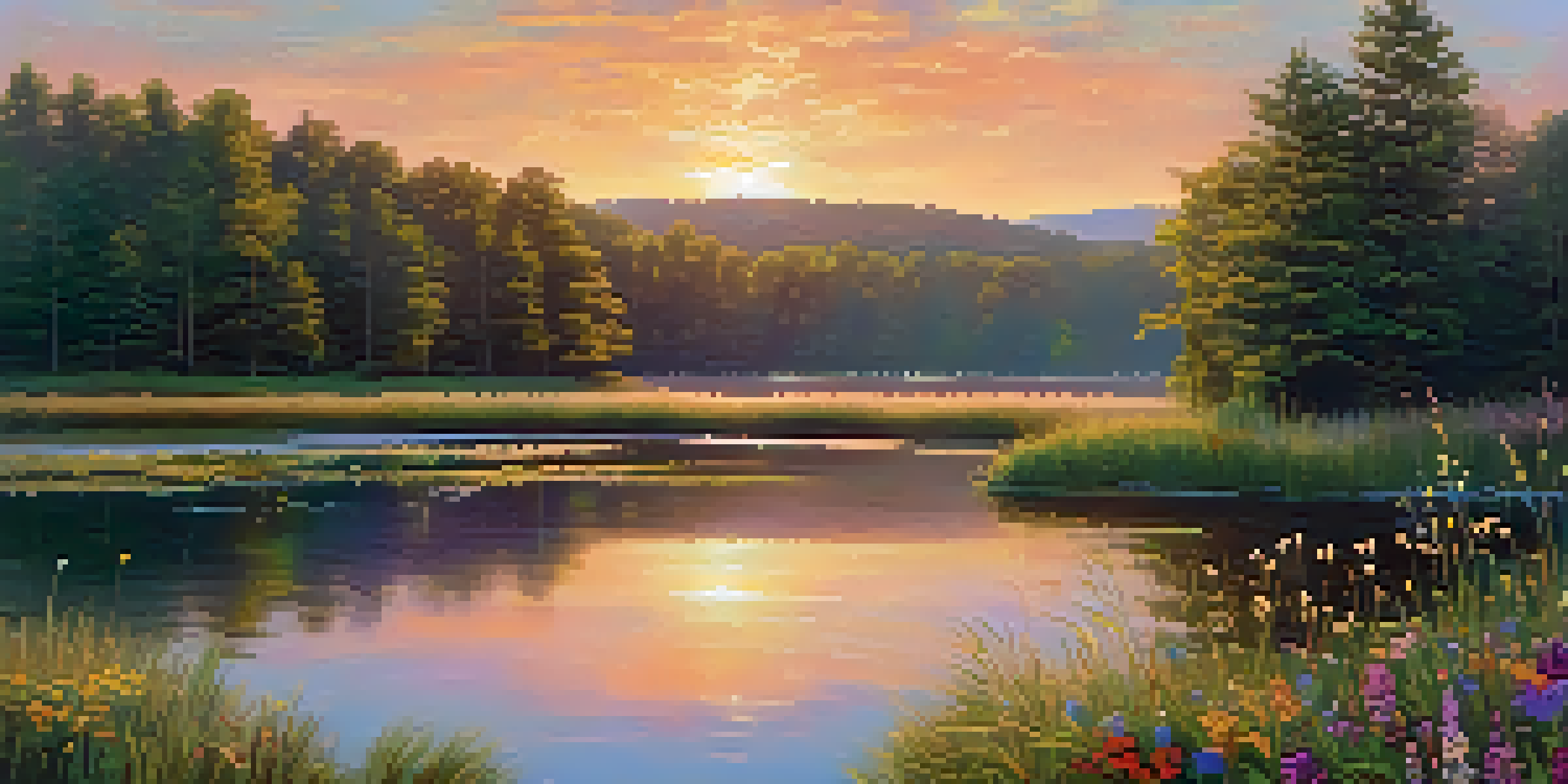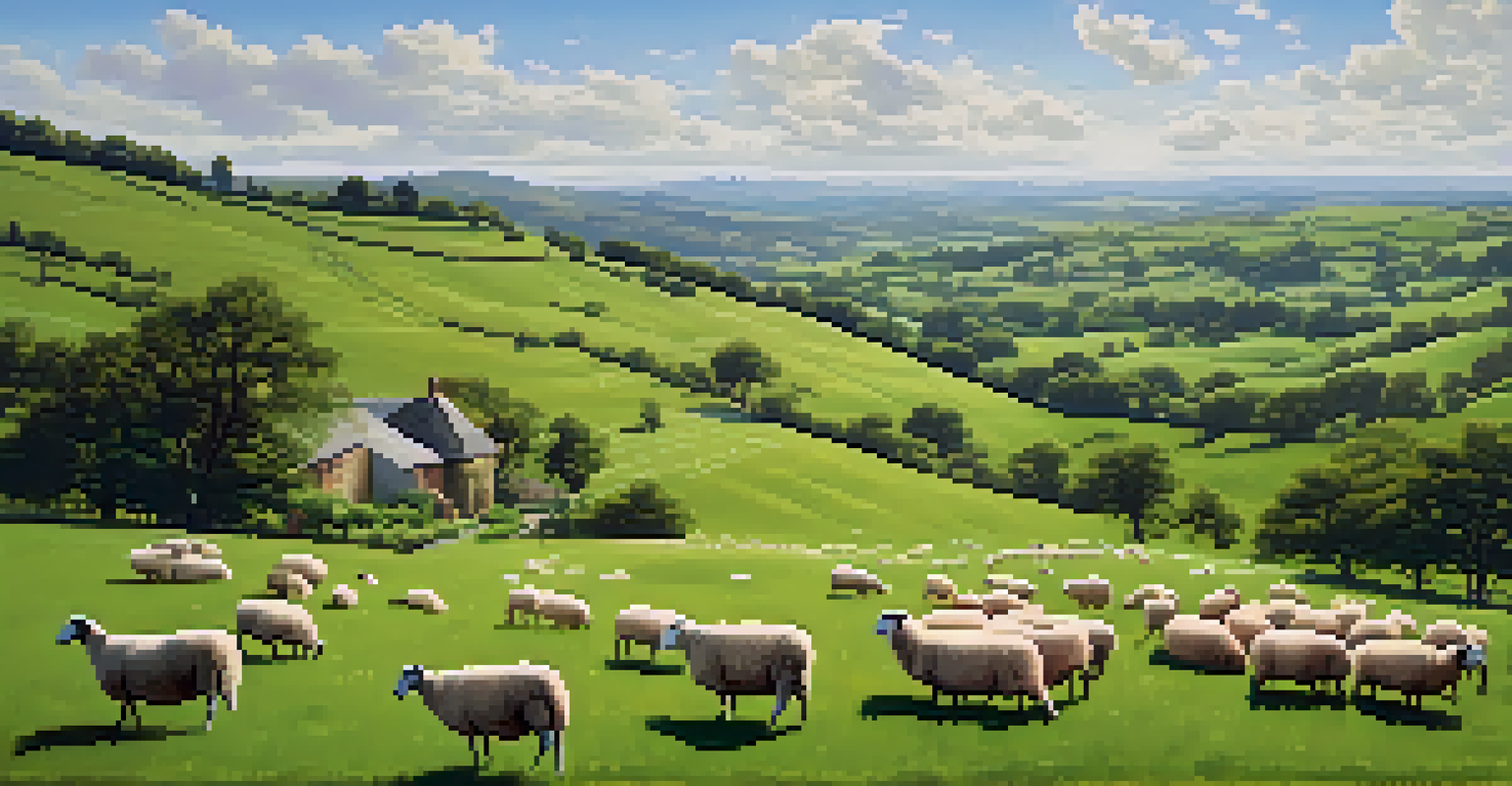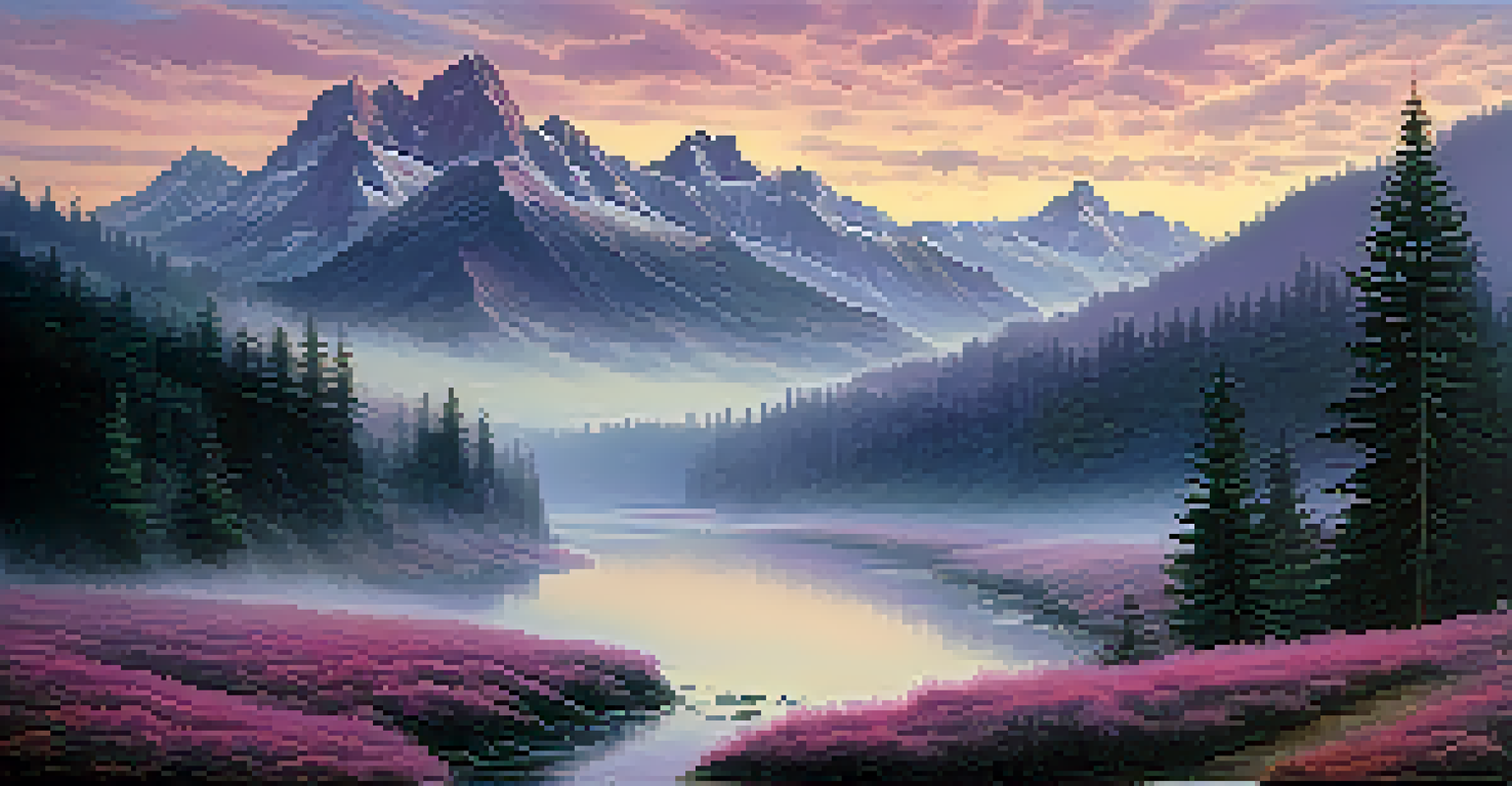Nature as a Symbol: Landscape Painting Through the Ages

The Roots of Landscape Painting: A Historical Overview
Landscape painting has deep historical roots, tracing back to ancient civilizations. The Egyptians depicted their environment in tomb paintings, while the Greeks and Romans celebrated nature in their artworks. This early focus on natural scenes laid the foundation for future artists to explore landscapes more profoundly.
Nature is not a place to visit. It is home.
During the Renaissance, artists like Leonardo da Vinci and Raphael began to incorporate more detailed and realistic landscapes into their work. This era marked a shift where nature was not just a backdrop but a vital component of storytelling in art. The lush, vibrant landscapes reflected human emotions and ideals, paving the way for deeper symbolic interpretations.
As we moved into the Baroque and Romantic periods, the portrayal of nature became increasingly dramatic. Artists like Caspar David Friedrich used landscapes to evoke feelings of awe and introspection. This evolution shows how nature transitioned from mere decoration to a powerful symbol of human experience and emotion.
Symbolism of Nature in the Romantic Era
The Romantic era, spanning the late 18th to mid-19th century, was characterized by a deep emotional connection to nature. Artists such as J.M.W. Turner and John Constable depicted landscapes that were not just beautiful but laden with feelings. Turner's swirling skies and turbulent waters illustrated the sublime, a concept that expressed the beauty and terror of nature.

Nature in Romantic art often symbolized the sublime, representing a force beyond human understanding. This idea resonated with audiences who were experiencing the rapid changes of industrialization. By emphasizing nature's power and mystery, artists encouraged viewers to reflect on their place within the vast universe.
Nature's Symbolism in Art History
Throughout various art movements, landscapes have served as profound symbols reflecting human emotions and experiences.
Moreover, the use of light and color in these paintings helped convey emotional depth. For instance, Constable’s pastoral scenes evoke a sense of nostalgia and tranquility, contrasting with the chaos of modern life. These landscapes became a sanctuary for viewers, symbolizing hope and serenity amid societal upheaval.
Impressionism: Capturing Nature's Fleeting Moments
Impressionism emerged in the late 19th century, shifting the focus to capturing the fleeting effects of light and atmosphere in nature. Artists like Claude Monet revolutionized landscape painting by using loose brush strokes and vibrant colors to express the beauty of natural scenes. This new approach allowed for a more personal interpretation of the environment.
The earth has music for those who listen.
In Impressionist works, nature is often depicted as a living entity, full of movement and change. For example, Monet's 'Water Lilies' series illustrates the changing light on water, symbolizing the passage of time and the ephemeral nature of life. This portrayal invites viewers to connect emotionally with the landscape, as it reflects their own experiences.
The emphasis on individual perception marked a significant departure from previous styles, where landscapes were often idealized. By embracing spontaneity and personal expression, Impressionism allowed nature to become a symbol of individuality and emotional resonance. It encouraged viewers to find beauty in the everyday and appreciate the world around them.
Post-Impressionism: Beyond the Surface of Nature
Post-Impressionism, following the Impressionist movement, sought to explore deeper emotional and symbolic meanings within landscapes. Artists like Vincent van Gogh infused their works with intense colors and expressive brushwork, reflecting their inner feelings about nature. His painting 'Starry Night' exemplifies how landscapes can symbolize turmoil and hope simultaneously.
In this era, nature is often depicted in a more abstract or stylized manner, moving beyond realistic representation. For instance, Paul Cézanne's work transformed landscapes into structured compositions, symbolizing the underlying order of nature. This shift encouraged viewers to engage with the emotional and psychological aspects of the environment.
Romantic Era's Emotional Connection
The Romantic era emphasized a deep emotional bond with nature, using landscapes to symbolize both beauty and the sublime.
The exploration of color and form in Post-Impressionism allowed artists to convey complex emotions associated with nature. By interpreting landscapes through a personal lens, these artists invited audiences to reflect on their own emotional connections to the natural world, highlighting the symbolic power of the landscape.
Modernism: Nature as a Reflection of the Human Condition
As the 20th century unfolded, Modernist artists began to explore the relationship between nature and the human condition in more profound ways. Artists like Edward Hopper used landscapes to evoke themes of isolation and introspection. His iconic work 'Nighthawks' captures the essence of urban loneliness, contrasting the natural world with human experience.
Nature during this period often served as a metaphor for psychological states. For example, Georgia O'Keeffe's landscapes of the Southwest embody both beauty and desolation, reflecting her own emotional landscape. This duality illustrates how nature can symbolize personal struggles and triumphs, resonating with viewers on a deeper level.
The Modernist approach to landscape painting emphasizes the subjective experience of nature, allowing for a more intimate connection. As artists pushed boundaries, they transformed landscapes into symbols of human emotion and existential inquiry, showcasing how nature reflects our innermost thoughts.
Contemporary Landscape Painting: Nature's Evolution
In contemporary art, landscape painting continues to evolve, embracing diverse perspectives and techniques. Artists today often blend traditional methods with digital media, creating unique representations of nature. This evolution symbolizes our changing relationship with the environment and the impact of technology on our perception of the natural world.
Many contemporary artists use landscapes to address environmental issues, prompting viewers to consider their responsibility toward nature. For instance, Olafur Eliasson’s installations create immersive experiences that connect audiences with the environment, symbolizing the urgency of climate change. These works encourage a dialogue about the future of our planet and the importance of preservation.
Contemporary Art and Nature's Role
In contemporary art, landscape painting evolves to address environmental issues while reflecting diverse cultural perspectives.
Furthermore, contemporary landscape painting reflects multicultural influences, showcasing how different cultures interpret and symbolize nature. This diversity enriches the art form, inviting viewers to explore their own connections to the landscape. As we navigate the complexities of the modern world, nature remains a powerful symbol of hope, resilience, and unity.
Conclusion: Nature's Enduring Symbolism in Art
Throughout history, nature has served as a profound symbol in landscape painting, reflecting human emotions and experiences. From the awe-inspiring works of the Romantic era to the introspective pieces of Modernism, artists have continually used landscapes to explore the complexities of life. This enduring relationship showcases the timeless power of nature as a source of inspiration.
As we look to contemporary art, the symbolism of nature remains relevant, highlighting the need for environmental awareness and connection. Artists continue to use landscapes as a canvas for personal expression and societal commentary. This ongoing dialogue between art and nature invites us to reflect on our own connections to the world around us.

In essence, landscape painting is not just about capturing scenery; it is a means of communicating the human experience. As we appreciate these artworks, we are reminded of the beauty, complexity, and resilience of nature, inspiring us to nurture our relationship with the environment and each other.